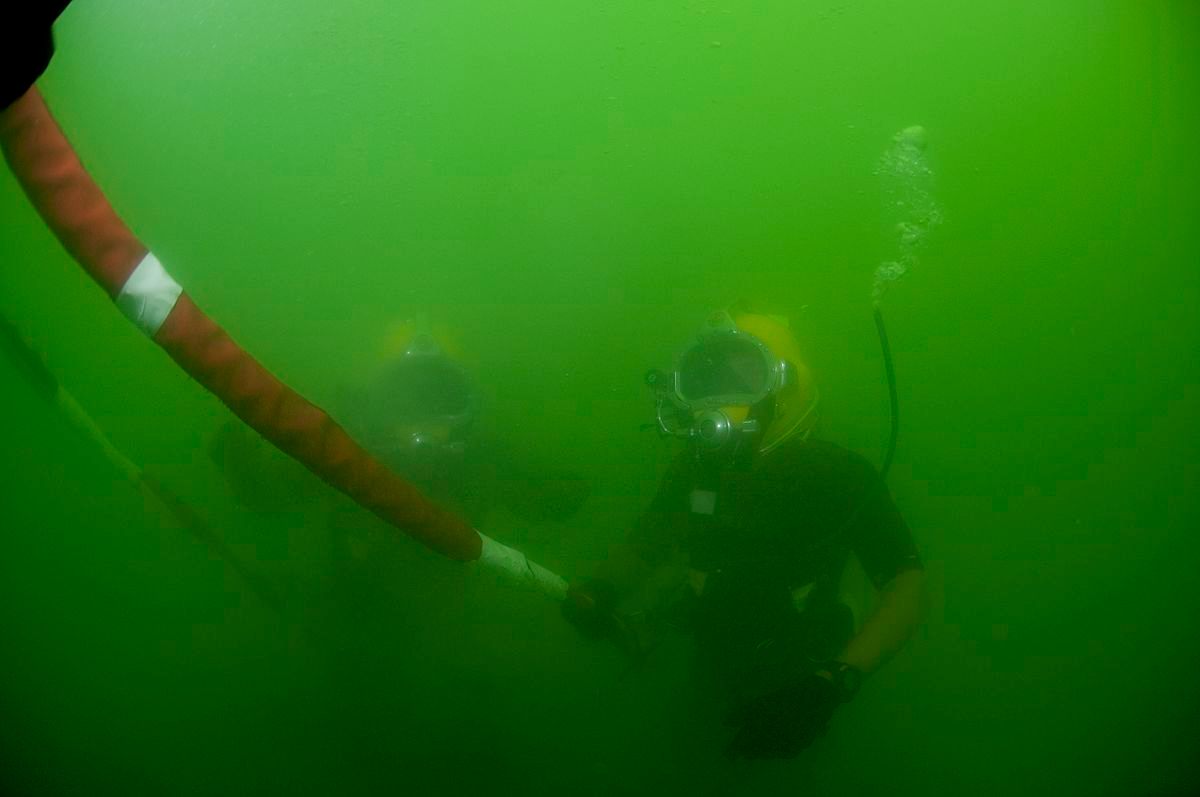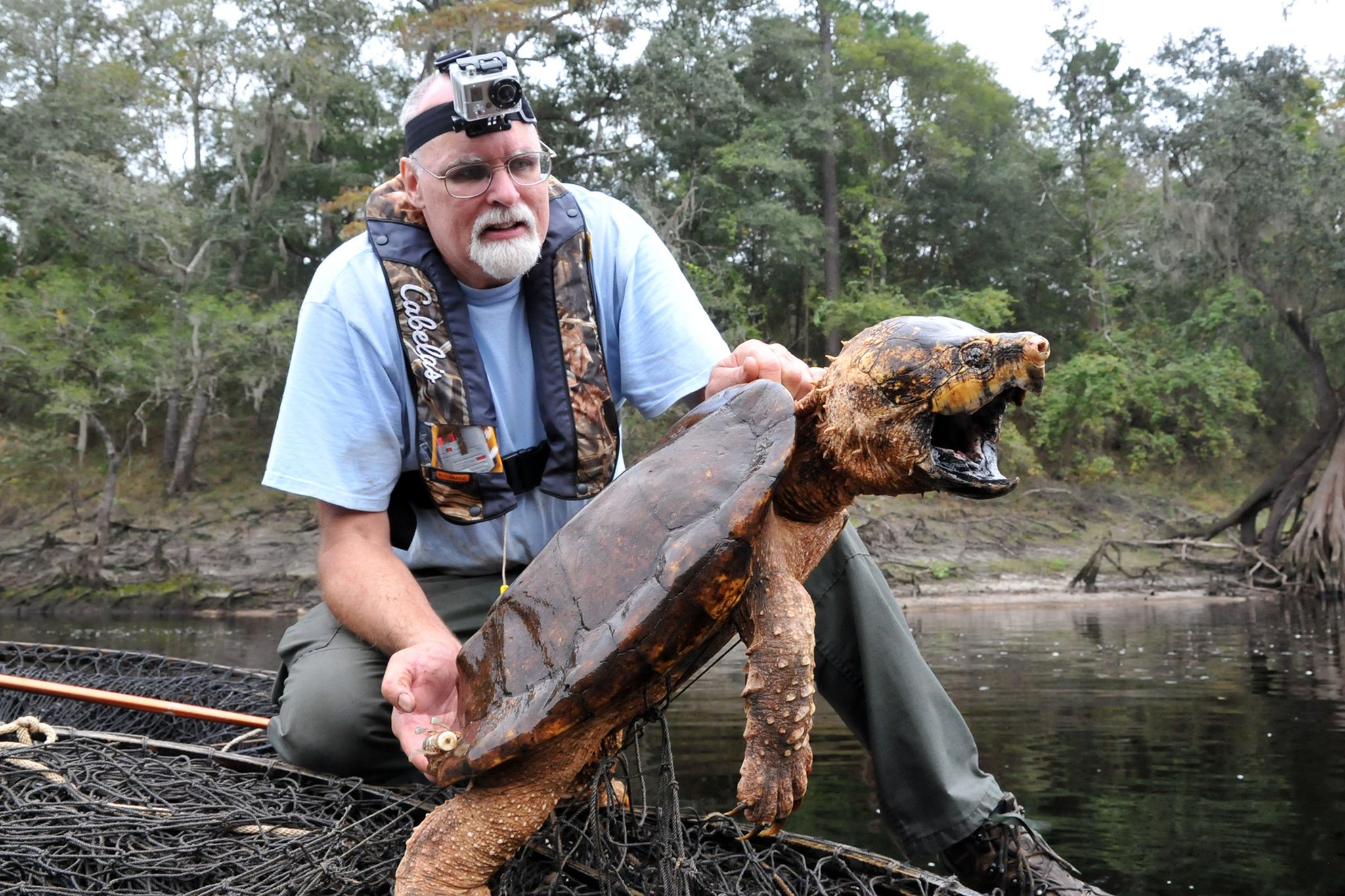What It’s Like to Be an Underwater Crime Scene Investigator
Welcome to CSI: Lakes, Rivers, and Oceans.

Underwater investigations need to follow the same strict procedures on-land ones. (Photo: Tony Webster/CC BY-SA 4.0)

For Mike Berry, a challenging workday might involve groping through the silt at the bottom of a lake in the pitch dark, hoping to stumble upon a gun while avoiding getting his hand chomped off by a snapping turtle.
Based in Virginia, Berry is an underwater criminal investigator. For the last 35 years, he has been diving to the bottom of lakes, rivers, and oceans in search of evidence that could send a murderer to prison or put a cold case to rest.
As with crime scenes on land, underwater investigations need to be conducted with the utmost consideration for protocol and evidence preservation. “The whole point of underwater criminal investigation is, just because the murder weapon was thrown off a bridge and went into the water, it still needs to be handled the same way, with the same rules, with the same requirements,” says Berry.
In addition to his job as the commander of Virginia State Police’s search and rescue team, Berry trains public safety officers on how to approach aquatic crime scenes with the level of meticulousness required to ensure the evidence found can be admissible in court. His organization, Underwater Criminal Investigators, prepares police and fire department divers for all aspects of the job, from marking evidence to making courtroom testimonies.

Things can get mighty murky underwater. (Photo: Public Domain)
Underwater criminal investigators are called upon for three main types of recovery operations: bodies, vehicles, and evidence. “Body recovery could be a person that drowned, it could be a murder, it could be a cold case where the person was murdered 10 years ago and tied up and thrown off a bridge,” says Berry.
In cold cases like these, “you’re not searching for a body anymore, you’re searching for bones and clothing and jewelry, and maybe cinder blocks and rope that they used to tie them up.”
The vehicles dredged up from waterways might be stolen, or part of an insurance fraud scheme. They may also have ended up in the water following an accident in which the driver loses control and spins off a road.
The “evidence” category is broad—guns and knives are common items on the search list, but divers also go looking for personal effects that relate to a crime, such as purses and suitcases.
The search process is methodical, physically demanding, and mentally taxing. It can also get pretty disgusting. “Most of the places we’re diving, unfortunately, are gross—they’re black, and the bottom is all mucky,” says Berry. “The only way to find that gun is to get down into the muck.”
Scuba divers scour the bottom of a body of water by hand, moving back and forth in straight lines—like mowing a lawn. Working in pairs, they hold onto a rope while sifting through a foot of silt, mud, trash, and foliage. As soon as the lead diver completes a section, the backup diver re-searches that area. It’s a thorough approach, and one that requires a lot of patience and concentration. It can take days or weeks to find that crucial object that can provide the missing piece in a puzzling crime.

A typical back-and-forth search pattern. (Image: Pbsouthwood/CC BY-SA 3.0)
For a body or a car, side-scan sonar, which creates an image of the lakebed or ocean floor, is often used to find the target object before sending divers down to retrieve it.
Regardless of the methods employed, the search is high-stakes. “You have police departments that are depending on you,” says Berry. “The case many times hinges on these divers and their ability to not only scuba dive, but to search in these very harsh conditions and find it.”
The taxing conditions don’t just involve muck and pitch blackness. “The water that we dive in, a lot of it is contaminated,” Berry says, “so just ingesting some of that water could kill you.” Divers can step on broken glass or injure their hands on nails. And then there are the creatures of the deep, some of whom make their presence known at highly inconvenient moments. Depending on the location of the investigation, divers may have to contend with turtles, poisonous snakes, alligators, or inquisitive fish.
“The worst I’ve been bit was from a snapping turtle,” says Berry. “You know, you can’t see them, so as your hand is moving along the bottom, feeling, you hope you get the rear end of the turtle instead of the front end. I got the front end one day … it went right through my hand, from one side to the other.” The pain, he says, was ”like a lightning strike.”

An alligator snapping turtle—one of the creatures to watch out for when searching waterways in the South. (Photo: Florida Fish and Wildlife/CC BY-ND 2.0)
Fish, while seemingly harmless, can also impede an investigation. “I’ve had fish take a chunk out of my lips before,” says Berry. A diver may also encounter what they think is a body, then discover it is a man-sized catfish. “You put your hand on something on the bottom and you’re thinking, ‘What’s this?’” says Berry. “And all of a sudden it swims.”
In the event that a diver does find a real human body, or part thereof, the usual approach is to place it in a body bag while underwater, then bring it to the surface. This helps preserve any physical or trace evidence on it, while preventing news media and family members of the deceased from seeing the body emerge from the water. In toxic or otherwise dangerous waters, investigators opt for what’s called the “grab-and-go” approach, foregoing the body bag until they reach the surface.
Though underwater criminal investigations can be hard, dangerous work, for Berry, nothing beats the thrill of finding that missing gun that can bring resolution to a case and justice to the bereaved.
“I’ve had a number of murderers that have told me, ‘You’ll never find it,’” he says. “And that just gets you excited, when they tell you that. It’s like, ‘Okay. We’ll see.’”












Follow us on Twitter to get the latest on the world's hidden wonders.
Like us on Facebook to get the latest on the world's hidden wonders.
Follow us on Twitter Like us on Facebook